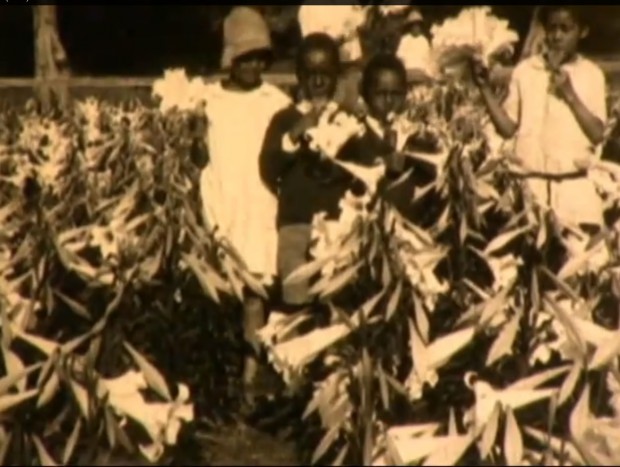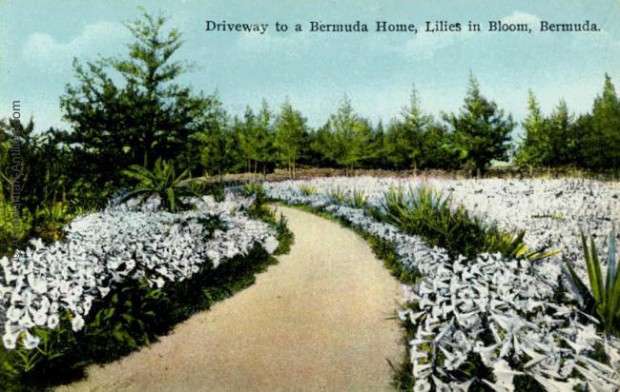Historic Video: Bermuda Easter Lily Farm
It was once said Bermuda was known as “The Easter Isle” for a million good reasons — that was the estimated size of the island’s annual crop of lilies when the industry was at its peak.
This historic video was shot during the Easter season in the 1920s at the farm of Malcolm Hollis – then one of Bermuda’s most prominent lily growers and exporters.
He was born in November, 1885 the son of Mr. and Mrs. William Aldgate Hollis.
Mr. Hollis farmed extensively in many parts of Bermuda for over 50 years and was active right up until the time he died.
His first farming endeavour was when he and his brother Ross took a dinghy and a barrel of potatoes to Cooper’s Island and rented it for a year or so and transported their crops back and forth to St. George’s and St. David’s by boat.
Scenes of Easter lily farm and other Bermuda sequences begin at the 3:19 mark
During the First World War [1914-18], his farm was situated where the current St. David’s Primary School is located and which before that was well known as Bermuda’s Pilot Station.
During the war years this farm provided victuals for soldiers stationed at the St. David’s Head. It was during this period that Mr. Hollis commenced lily growing.
Following the end of the First World War, the Government of the day decided to compulsorily purchase that farm from Mr. Hollis to turn it into an isolation hospital.
Mr. Hollis then moved to a farm further to the west in St. David’s and known as the Beehive Farm which he farmed again until that property was compulsorily purchased during the Second World War to be leased to the US for the construction of Fort Bell [later Kindley Air Force Base and the US Naval Air Station].
Mr. Hollis then concentrated his farming at his farm in Smith’s Parish between Harrington Sound and Knapton Hill and known as Harrington Harrissii Farm.
Image from the film shot at Malcolm Hollis’ lily farm
Both before and after the Second World War Mr. Hollis exported all types of agricultural produce to the United States and exported lily flowers and bulbs to US, Canada, England, Europe and even Cuba.
In 1954 Mr. Hollis shipped 60 cases of lily bulbs to Robert Tucker & Company in London to be planted in London’s famed Hyde Park.
Commercial production of the bulb began here in the mid-1800s and within a few decades Bermuda was routinely being referred to as “The Easter Lily Island” – or simply ”The Easter Isle” – in American and Canadian newspapers.
Once one of the island’s largest industries, in the 20th century Bermudian lily growers could not hope to compete with American farmers whose landholdings sometimes exceeded the island’s total acreage.
In the late 1920s and early ’30s Bermuda’s agricultural sector began to decline even as the new luxury resort tourism industry started to blossom and by the 1970s the lily industry was all but defunct.
Vintage postcard highlighting Bermuda’s reputation as “The Easter Lily Island”




Sigh! Bermuda! Now you see only sprinkles of easter lilies but never on this scale again.